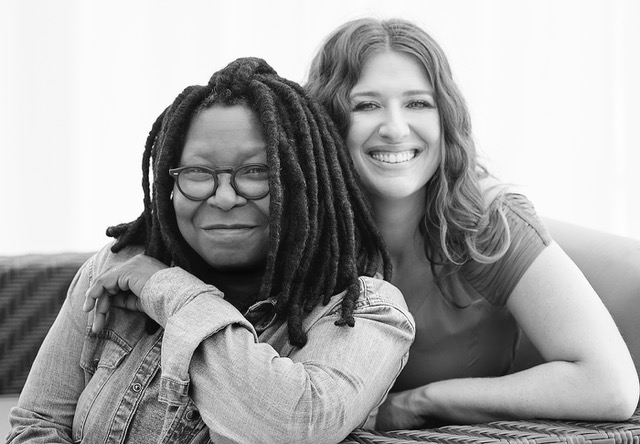Photo credit: Timothy White
Whoopi & Maya Does the Work to Bring High-Quality Compliant Cannabis Products to Both California and Colorado.
One of the trickiest things to pull off for any business is expansion, and that goes double in the complex and ever-changing world of cannabis.
The bottom line: It’s complicated.
Despite the hurdles of expanding to new states, Whoopi & Maya has found that legal cannabis’ labyrinth of legislation, compliance and distribution is well worth navigating. The company’s carefully crafted line of healing cannabis-infused products offers reliable and trusted relief for some of the most common ailments, including menstrual pain, stress, inflammation and more – and Whoopi & Maya knows that many people across the country are seeking such natural cannabis products to ease their suffering.
Their California-based line of medical cannabis products launched in April of 2016, and the popularity of their soothing and healing self-care salves, tinctures and rubs propelled co-founders Whoopi Goldberg and Maya Elisabeth to view Colorado as the next stop on their pain relief train.
The significantly different regulations and compliance issues between the two states, though, meant rethinking, well, pretty much everything – from formulating and packaging to labeling and marketing.
“You can’t just take the Whoopi & Maya products and put them on a plane and sell them in Colorado,” says Noah Sodano, chief marketing officer for RMZ Colorado, a cannabis manufacturing and distribution service that specializes in compliance, which helped spearhead Whoopi & Maya’s expansion to Colorado. “There’s just no way in the current regulatory situation to move products from state to state – so when you take a brand from one state to another, you are building it from the bottom up to match the regulations and repackage it to be compliant. And in some cases, you have to consider taking an entire formulation and redoing it from scratch.”
“So, we were tasked with the research and development that would retain the high quality of the products while addressing those differences,” Sodano explains. “It takes a lot of intention and effort to make the product experience seamless from one place to another. You need attention to regulatory detail and attention to the patient experience, as well.”
Whoopi & Maya’s Colorado line launched in mid-November of 2017, with all the compliance issues addressed and the products meeting the company’s high expectations.
Some differences between the two states’ product lines are subtle – there’s 25 mg of THC in Colorado’s 8-ounce version of the Soak, compared to the same milligrams in the smaller, 6.5-ounce offering in California – but some changes are more obvious. For example, in Colorado, clear glass containers are forbidden and packaging must be child-resistant. So Sodano’s team had to address that by finding just the right food-grade plastic containers, which also had to feature child-resistant lids.
The packaging turned out to be one of the most substantial changes the team had to make. Colorado has much stricter rules about child-resistant containers and labeling requirements than California currently does.
“The reason so much of the cannabis packaging in Colorado looks like a Dr. Bronner’s bottle, covered in information, is because of the amount of compliance language that is required,” Sodano adds. “We really wanted to keep the clean, elegant approach to packaging that was used in California. And while it was a significant cost, we designed a peel-away label so that consumers can just pull this beautifully designed label off, and all the required compliance language is underneath.”
It’s the behind-the-scenes changes that consumers may not notice, however, that presented even bigger challenges to the R&D process, such as the provenance and sourcing of the highest-quality cannabis to use in infusions.
“The way Maya and her team do the decarboxylation process in California, well, we’re not allowed to do it that way in Colorado,” Sodano explains. “So, we had to work through ways to mimic the process’ results. In the end, it wasn’t as drastic a difference as some other changes we had to make, but it was definitely a trial-and-error kind of deal.”
Some of the packaging for Whoopi & Maya’s Colorado line had to be rethought from the ground up, though. For example, in California, Savor’s cacao-based formulation comes in a sweet, little glass jar. In Colorado, though, regulations require that all edibles be stamped with the universal diamond-shaped “THC” symbol. With its peanut butter consistency, Savor can’t be stamped. So Whoopi & Maya sell it in single serving foil pouches with 10 mg of THC in each – a concession Sodano says required substantial R&D time figuring out how to retain freshness and flavor.
“Sometimes it takes a while to work with our legal and production teams to find the right creative approaches,” Sodano says. “If you walk into a dispensary and see the products on the shelf and are blown away by how nice and elegant they look, and then you try them and are also blown away by the experience, well, then, we’ve done our job.”
